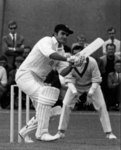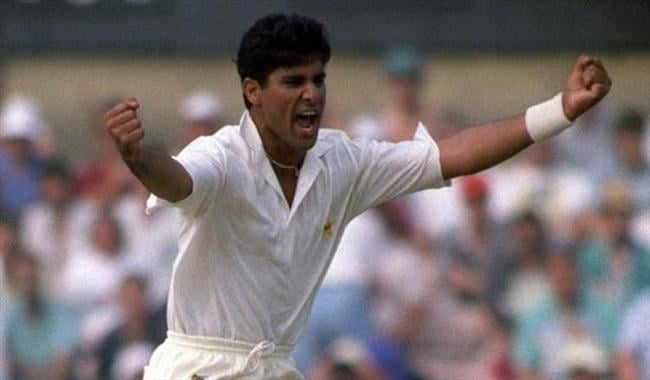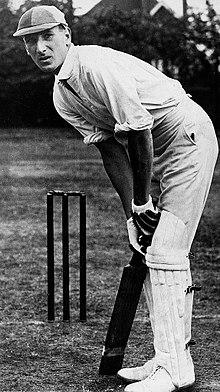My first pick goes to
Wilfred Rhodes
Stats|Matches|Runs|HS|

Ave|100s/50s|Wkts|

Ave|Econ|BBI|BBM|5w/10w
First-Class
|1,110|39,969|267*|30.81|58/197|4,204|16.72|2.27|9/24|?|287/68
Test
|58|2,325|179|30.19|2/11|127|26.96|2.49|8/68|15/124|6/1
here is his bio from wiki
"
Wilfred Rhodes (29 October 1877 – 8 July 1973) was an English professional cricketer who played 58 Test matches for England between 1899 and 1930. In Tests, Rhodes took 127 wickets and scored 2,325 runs, becoming the first Englishman to complete the double of 1,000 runs and 100 wickets in Test matches. He holds the world records both for the most appearances made in first-class cricket (1,110 matches), and for the most wickets taken (4,204). He completed the double of 1,000 runs and 100 wickets in an English cricket season a record 16 times. Rhodes played for Yorkshire and England into his fifties, and in his final Test in 1930 was, at 52 years and 165 days, the oldest player who has appeared in a Test match.
Beginning his career for Yorkshire in 1898 as a slow left arm bowler who was a useful batsman, Rhodes quickly established a reputation as one of the best slow bowlers in the world. However, by the First World War he had developed his batting skills to the extent that he was regarded as one of the leading batsmen in England and had established an effective opening partnership with Jack Hobbs. The improvement in Rhodes's batting was accompanied by a temporary decline in his bowling performances, but the loss of key Yorkshire bowlers after the war led to Rhodes resuming his role as a front-line bowler. He played throughout the 1920s as an all-rounder before retiring after the 1930 cricket season. His first appearance for England was in 1899 and he played regularly in Tests until 1921. Recalled to the team in the final Ashes Test of 1926 aged 48, Rhodes played a significant part in winning the match for England who thus regained the Ashes for the first time since 1912. He ended his Test career in the West Indies in April 1930.
As a bowler, Rhodes was noted for his great accuracy, variations in flight and, in his early days, sharp spin. Throughout his career he was particularly effective on wet, rain affected pitches where he could bowl sides out for very low scores. His batting was regarded as solid and dependable but unspectacular, and critics accused him of excessive caution at times. However, they considered him to be an astute cricket thinker. Following his retirement from playing cricket, he coached at Harrow School but was not a great success. His eyesight began to fail from around 1939 to the point where he was completely blind by 1952. He was given honorary membership of the Marylebone Cricket Club (MCC) in 1949 and remained a respected figure within the game until his death in 1973."
My second pick goes to
Waqar Younis
Stats|Matches|Wkts|

Ave|Econ|BBI|BBM|5w/10w
First-Class
|228|2,972|22.33|3.26|8/17|?|63/14
Test
|87|373|23.56|3.25|7/76|13/135|22/5
His bio from wiki:
"
Waqar Younis is a Pakistani cricket coach, commentator and former cricketer who captained Pakistan national cricket team. A right-arm fast bowler, Waqar is regarded as one of the greatest bowlers of all time. He is the current bowling coach of the Pakistani cricket team.
As of 2012, he holds the record for the youngest Pakistani Test captain and the third youngest Test captain in history (22 years 15 days). He played 87 Tests and 262 One Day International (ODI) matches for Pakistan during his international cricket career from 1989 to 2003.
Younis' trademark was his ability to reverse swing a cricket ball at high speed. He took 373 Test wickets and 416 One Day International wickets during his career. Together with bowling partner Wasim Akram, he formed one of the world's most feared bowling attacks. Younis has the best strike rate, after Dale Steyn, for any bowler with over 350 Test wickets. He is the youngest bowler to take 400 wickets in ODI cricket.
He is widely recognised as one of the world's best ever bowlers, though most commentators agree his career statistics weakened after his back injury in 1991. Despite this, he would place in the top ten of all time based on ICC rankings."
My Team:
1.
2.

 Wilfred Rhodes
Wilfred Rhodes (
2 centuries)
3.
4.
5.
6.
7.
8.

 Shane Warne
Shane Warne
9.
10.

 Waqar Younis
Waqar Younis
11.

 Jimmy Anderson
Centuries used
Jimmy Anderson
Centuries used: 2/10
@VC the slogger you have the next pick

























